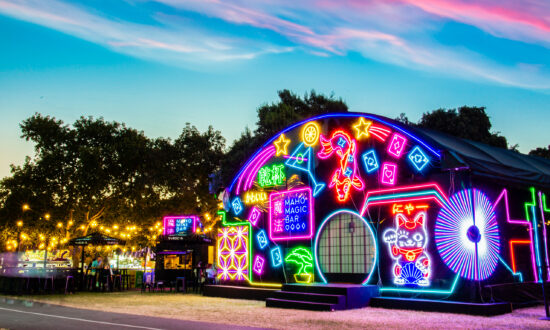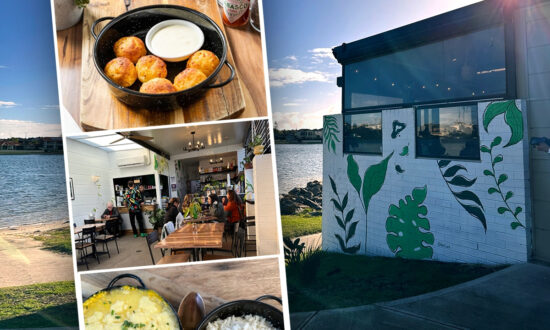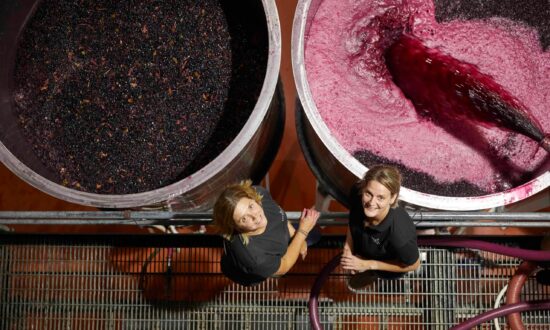One of the most intensely personal historical “monuments” in South Australia is a massive, hollow red gum trunk, known as the Herbig Family Tree, at the southern outskirts of the eastern Barossa township of Springton.
It is well documented as the first “home” of Johann Friedrich Herbig who lived inside this extraordinary seven-metre base diameter tree from 1858 with his 18-year-old wife Caroline Rattey and their first two children, before the family expanded, eventually to 16, forcing him to build a two-roomed pine and pug hut nearby and, later, a stone cottage.
It tells of the incredible pioneering spirit of those early European settlers, though it must be noted that the tree has a strong cultural significance to the original Peramangk people in the area – the tree itself is thought to be up to 500 years old, and bears coolamon scars from when traditional custodians carved wooden dishes out of the gum’s bark.
I tell this story because at the very same time as Johann and Caroline were living in that tree, another development was underway about three kilometres to the east, where early settler David Randall was, no doubt, regularly passing the old gum on his horse and dray on his way to establishing an extraordinary vineyard, originally named the “South Rhine Vineyard” and more lately known as Stonegarden.
Randall and his chief winemaker Mr Charlesworth planted the vineyard during 1858-1860 with varieties known then as Verdeilho (Verdelho – but it was more likely Riesling), Tokay (mixed Muscat varieties), Mataro (Mourvedre), Shiraz (Syrah), Carbonet (Cabernet Sauvignon) and Black Portugal (Grenache).
Many of those original vines still provide much-admired fruit to a select few Barossa and Eden Valley-based producers, though in its 164-year lifetime it hasn’t garnered anywhere near the fame of several other superstar vineyards in the region, perhaps because it hasn’t had a single, constant wine brand associated with it; it has been more of a transactional deal, with a succession of owners, often merchant bankers, pastoralists or investors and vineyard owners selling fruit to bigger players.
Seppeltsfield was one of those, in the 1880s. There appears to be a historical connection, with one reference noting Benno Seppelt as the builder of a significant winery on the property, now heritage listed and in the process of refurbishment by current owner, Glen Monaghan, along with business partner in a new Stonegarden wine brand, Ben Radford, a former head of winemaking at Rockford, who still consults there.
The Hamilton wine family had been the main owner since the late 1940s, expanding the vineyard and winery, and for a while during that time leasing the property to others like Mildara Blass, now part of Treasury. The Hamiltons were intent at first to source fruit from there for its finest Moselle style while wine, fortuitously as many of the original plantings, first identified as Verdelho, were in fact Riesling.
The Hamilton name stayed with the vineyard till 2015. Owner Mark Hamilton had started to rejuvenate the vines with then vineyard manager Brett Grocke, who with his own Eperosa brand is still sourcing a section of Grenache from there. They also embarked on a plan to give the vineyard a lift in profile by selling its unique and highly distinctive fruit, yet limited in volume, to several key Barossa winemakers, including the likes of Alex Head, John Duval, Chateau Tanunda, Kellermeister, Brothers at War and Rockford.
Then came Monaghan to the story, who was looking around for a hobby vineyard of sorts after moving out of the oil and gas engineering industry. In a wine tasting with a few mates at Grocke’s Barossa shed, he was passed a glass of Grocke’s 2013 Grenache from the old Stonegarden vines.
“I put it to my nose for a second, and it was a bit of an ah-ha moment,” Monaghan recalls. “It was – there we go, that’s the sort of vineyard I need to buy. Where does this come from? I want to see that vineyard.”

The vines at Stonegarden might not be pretty, but they produce cherished fruit for local winemakers.
He was able to buy the property from Mark Hamilton in 2015, with an ambition not only to continue growing and selling grapes but to make his own wine from it and, in the process, preserve its remarkable history. While he and his wife Tania own the vineyard, Ben Radford, who had previous experience making Grenache from the property with Rockford, has joined as a business partner in the winemaking and Stonegarden brand side of things.
One-hundred-and-sixty-year-old Grenache vines are the big attraction for most of the winemakers taking a share of the rare fruit, but there is much more on offer. A mixed muscat block contains at least 20 varieties, Monaghan says, and every time he engages a guru to look into it, they find more. Koen Janssens and David Geyer source their wild-at-heart Yeti and the Kokonut Fruit Salad Block field blend from here – it includes Riesling, Crouchen, Viognier, Verdelho, Sauvignon Blanc, Semillon, Grenache Mataro, Sultana, several different Muscats, and others. It’s all picked in one go, usually when the Mataro is just ready, late in the season, when the muscats and others can be super ripe.
The field blend process reflects an old Barossa vine garden tradition, with the romance of history also driving this most futuristic of brands and style associated with the vineyard.
“First and foremost, we are trying to keep the block alive and not ripped out – there’s a genuine value in that,” Koen says. “Also, it’s just pure fun. We get in there with our baskets, and every year the fruit and wine is different. It’s a true representation of what is there.”
“It’s like a treasure trove in there,” Radford says of the muscat block, though he could be talking about the rest of the vineyard as well. There’s a mix of Shiraz from 1858 and 1946, and Cabernet Sauvignon from the 1940s, 1970s and a patch of what are believed to be original 1858 plantings.
The Grenache blocks are something else again, with quite a few Mataro and Shiraz wines as well as some Malbec, Pedro Ximenez and Trincadiera, scattered in amongst the main Grenache vines, harking back to the industry’s fortified wine days though, tellingly, this vineyard was originally set up mostly for elite table wine, even back in the mid-1800s.
It’s worth noting however that if you’re thinking these are your Insta-worthy gnarly ancestor vines, then that’s not totally the case. Originally these were planted as bush vines, but when one of the corporates was leasing the block, they cut them off above the ground to trellis them, training up water shoots off the thick base trunks. The resulting progeny are still attached to living, breathing 164-year-old vines in the ground, but arguably not as gloriously ancient-looking as expected.
“It’s organically run, the weeds managed without spray but under-vine knifing and mowing and occasional sheep,” Radford says. “You can see it’s a tough, hard-working, ugly vineyard, and not at all manicured.
“But if you speak to a lot of viticulturists and winemakers, and I know myself, often the ugly, wild-looking vineyards produce some incredible fruit.”
How that fruit and its resulting wines express the vineyard is the next big question here.

Brett Grocke says the Grenache at Stonegarden is the more powerful of the two clones of the variety most common in the Barossa.
“There’s a beauty and inherent quality that everyone sees in (its Grenache),” Brett Grocke says. “Part of ‘terroir’ is the clone. In the Barossa, there are essentially two main Grenache clones: a more pinot-esque one, and the one out at Stonegarden, which is more deeply coloured and with more structured tannins, the more powerful clone.
“You also combine the elevation – 395m at the top of the site – and granitic rock and quartz, which bring a linear shape into the mouth, more dare I say it, minerally type lines, and that’s its beauty. That and 164-year-old vines, which do have something special in their resilience.”
For Alex Head, who crafts barely 50-60 cases of Head Wines Ancestor Vine Grenache out of his annual allocation from the vineyard, Stonegarden delivers a totally unique style.
“It makes heavily structured Grenache, which the Barossa doesn’t really do – we can’t get the tannin load out of Barossa Valley floor fruit, we can’t make wines with that level of longevity or acidity, and this vineyard gives us that opportunity like no other vineyard does,” Head says.
“You have a sip of the wine and you get hit with these fumes of rosewater, and Turkish Delight, and then comes the tannin and length out the back. It’s really bizarre – it’s like mouth-perfume.
“I’ve worked with a lot of fruit in my brief winemaking life, and there’s just nothing like it.”
Brett Grocke also uses a rosewater reference to describe his Grenache’s varietal fragrance, while for the mouthfeel he likens it to savoury tea leaf tannins that give the fruit a sense of drive and power without excessive weight.
Each winemaker creates their own variation of what their specific patch of the field offers. Each also is among a privileged group in the Barossa, which came upon Stonegarden mostly via word of mouth and a keen sense of local longevity.
The vineyard is virtually unknown outside the region. The wines that come from it, however, are living monuments of an otherwise secret history.
TASTING NOTES

Stonegarden Grenache 2019
Eden Valley / 14.5% / $55
One of the three varietal iterations from the Stonegarden home team – vigneron Glen Monaghan and winemaker Ben Radford. The other two are straight-up Shiraz and a Cabernet Sauvignon. As is the case with the others featured here, the Grenache blocks contain a smattering of Mataro and Shiraz in various amounts, which add to the micro-terroir of each variation. This and the other Grenaches have a forward fragrant opening of a rose petal-like note, here woven into darker spice elements, the old vines’ fine, earthy tannins in play from mid-palate onwards, while a richness and sweetness of deliciously ripe fruit sings loud and true. Decant for several hours at least to allow this to show at its very best.
Eperosa Stonegarden 1858 (Grenache) 2020
Eden Valley / 14% / $60
Winemaker Brett Grocke knows the vineyard enough to detail that there is a 3% Mataro and 2% Shiraz component within this wine, which he ferments totally as whole bunches for, typically, 18-21 days. This is a redder fruit style, though never simplistic, starting with the vineyard’s rosewater-like nose underscored by an aromatic gritty, earthy sense. Crushed rocks, perhaps? The weight, between medium to bold, is delicious in the context of its complexity, an ethereal line running through the wine, long, salivating and lip-smackingly moreish.
Brothers At War Single Vineyard Grenache 2021
Eden Valley / 13.5% / $80
Just 700 odd bottles have been made by this team from their slice of the distinguished Stonegarden action. Brothers Angus and Sam Wardlaw have gone for 50% whole bunch fermentation, with the balance de-stemmed whole berries. Once pressed, it spends 12 months on lees in lightly toasted new French puncheons, which bring their savoury personality into the finished wine with a delicate touch. Once again, uncork and decanter to let the air get in and release the densely packed elements. Stick your nose right in and be almost overwhelmed by the many layers and nuances that rise out of the glass: cherry flesh and skins, an earthy nuttiness, a wave of pretty fragrance providing an attractive top note. Right away, too, a distinctive spray coating of fine tannin gives structure and savoury texture, and a framework to carry its impressive, never-say-die wave of great Grenache flavours.

Get InReview in your inbox – free each Saturday. Local arts and culture – covered.
Thanks for signing up to the InReview newsletter.
Head Ancestor Vine Grenache 2020
Eden Valley / 14.5% / $100
Classified “Ancestor” under the Barossa Old Vine Charter for vines more than 125 years old, Alex Head’s allocation from the Stonegarden vineyard has produced an absolute stunner. There are very few wines that actually stop you in your tracks at first sniff – this is one of them. The fragrance is so heady (forgive the pun) and attractive: crimson rose petals, orange zest, summer orchards with all their sun-kissed leaf, flower and earth aromas alive and vibrant. Intense is the wrong word: this is more about sublimity. When tasting, it’s a cherry Danish pastry right there in your face, soft, luxurious, a tidal swell of flavour before its fine, chalk dust tannins carry the wine into a confident, yet gentle and delicious coda – an extended conclusion to a truly superb icon-status wine from a very special place.
Yetti & The Kokonut “Fruit Basket Block” 2021
Eden Valley / 11.8% / $35
This wine presents an opposite mindset to the more traditional Barossa winemakers’ tapping into the old Stonegarden vineyard. It’s no classical composition, either. Intentionally. A mix of at least a dozen and likely more varieties from a fruit salad block – whites, reds, some designed for table, others traditionally used for fortified production. This is a simple, fun-loving, picnic and casual afternoon kind of splash, great with snacking and grazing food. First the colour: sitting somewhere between orange, papaya, and (if it’s a thing), clear ochre. Then the aromatic and flavour profile: again, hard to pin down in traditional terms but sitting somewhere between French Orangina and Aperol. Very summery, very slurpable, and works a treat with a splash of soda as well.
Support local arts journalism
Your support will help us continue the important work of InReview in publishing free professional journalism that celebrates, interrogates and amplifies arts and culture in South Australia.
Donate Here




